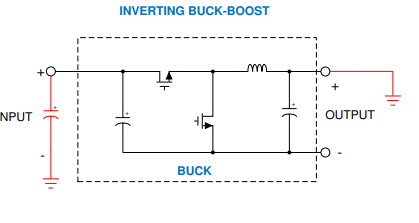Other Parts Discussed in Thread: LMR38025
Tool/software:
I'd like to use the LMR38025-Q1 so I can step down ±30V rails into ±20V rails for an analog device. While it seems like I'm still in the maximum specifications of the device at 80V I'm not too comfortable with the amount of power that I'd be dissipating across the device. I had previous issues with non-ground references in the past on TI Components so I thought I'd ask if I'd be able to reference the buck to -30V and then regulate such that I could get -20V out of it.
In this configuration I'd have one device per rail and then be able to dissipate the power across both of the devices.
Thanks!


